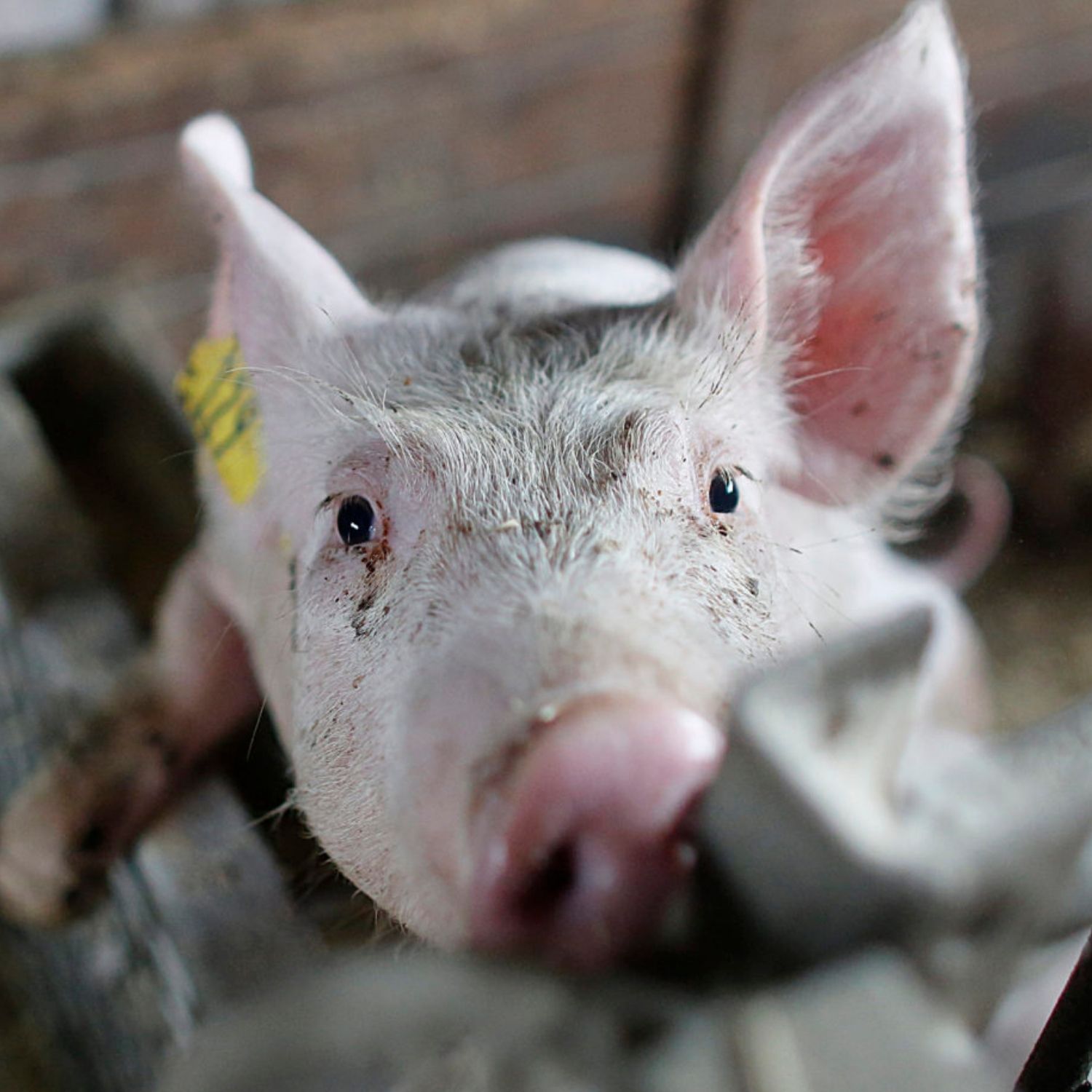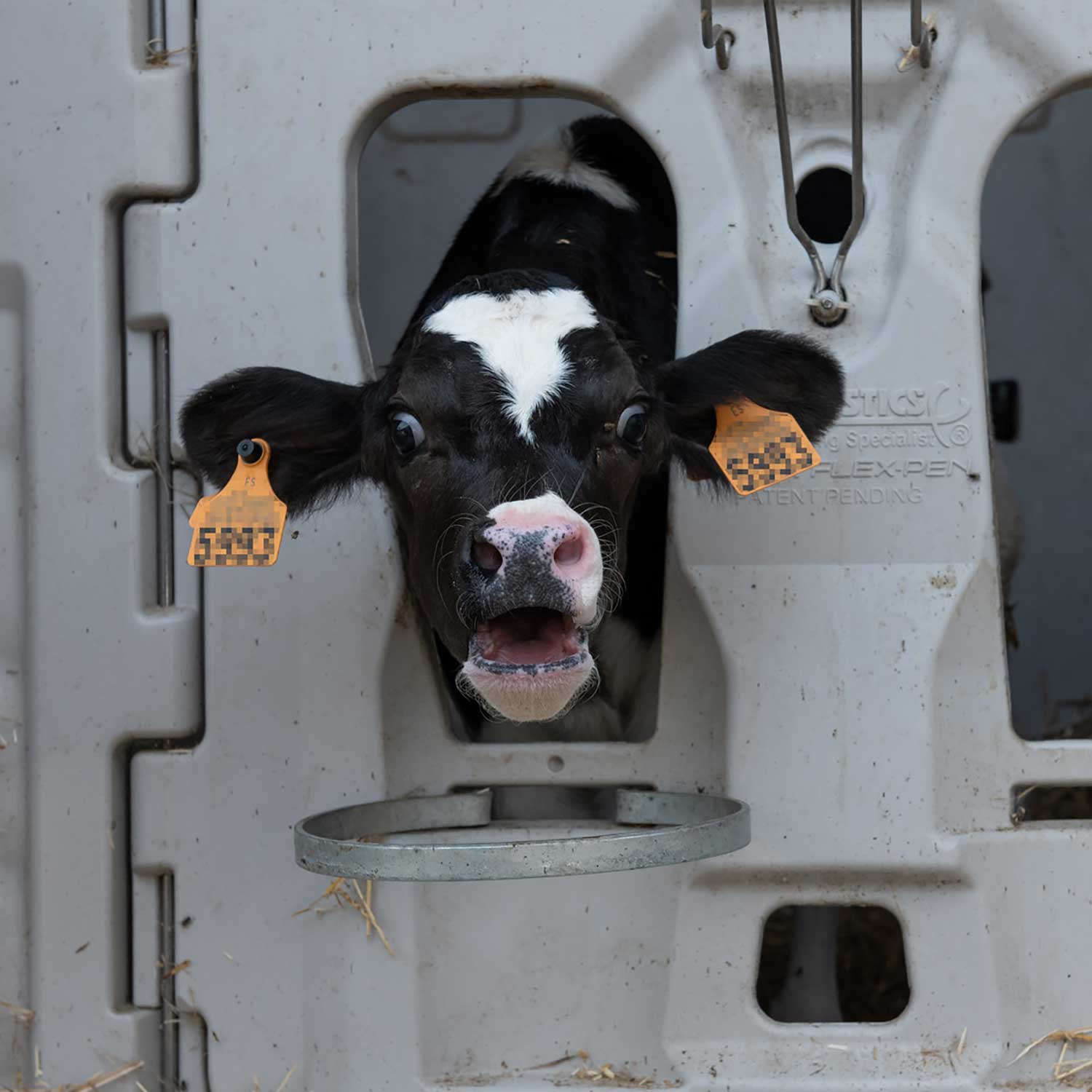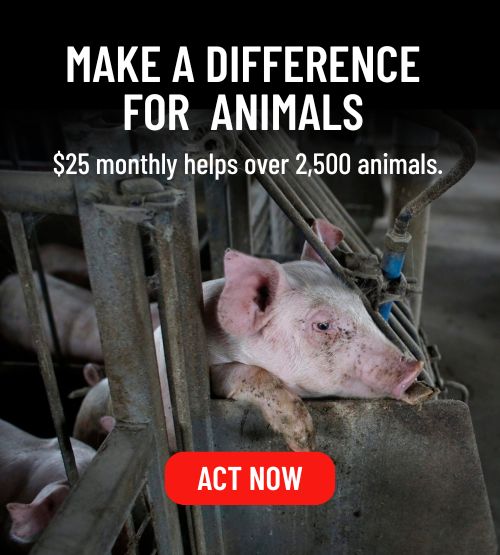Investigation Reveals Factory Farmed Chickens are Genetically Predisposed to Suffering

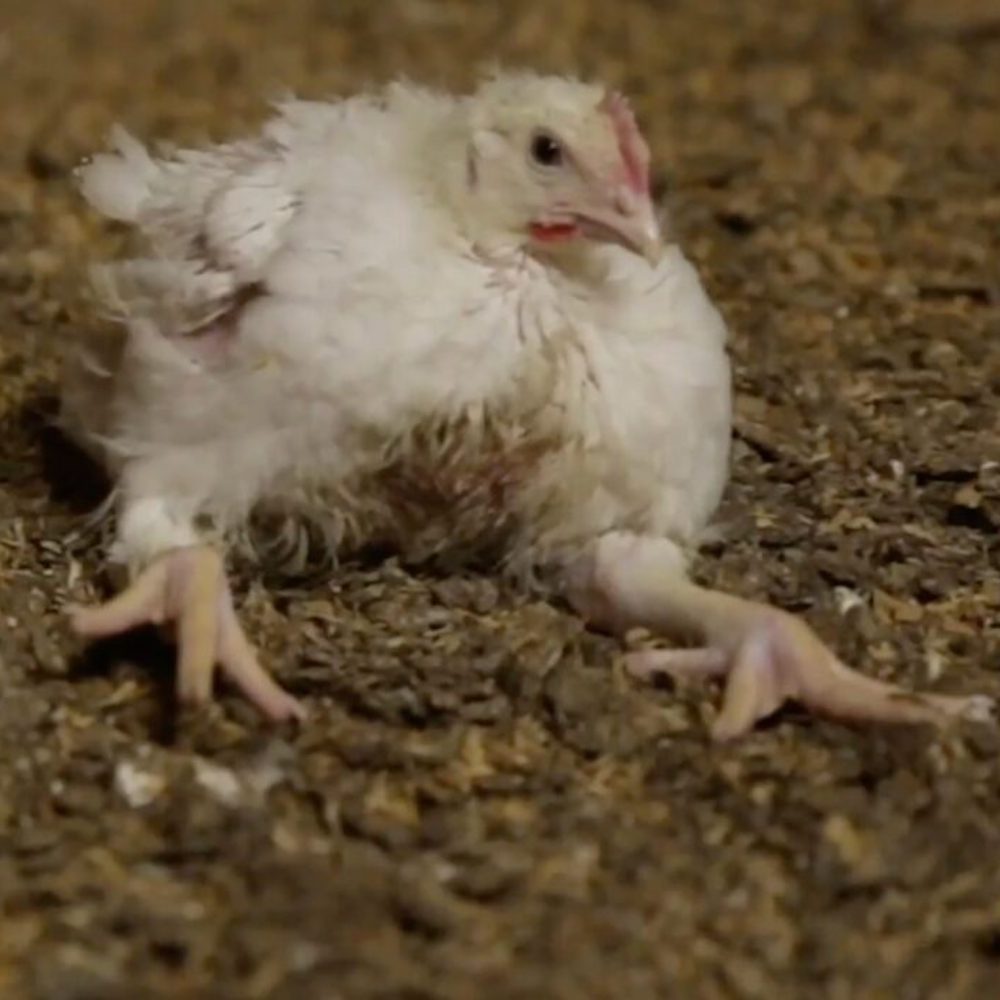
Animal Equality’s team in Italy collected the bodies of seven chickens from an intensive farm, one for each week of their life, and analyzed their bodies with help from specialized veterinarians. Our team also analyzed three fast-growing chickens who were rescued and living in an animal sanctuary to compare the findings.
The clinical examinations and x-rays carried out by the veterinarians reveal the contradiction between the Italian animal welfare laws and the reality experienced by these animals. Legislation in Italy specifically requires farmers to take ‘appropriate measures to ensure the welfare of their animals and to ensure that they are not caused unnecessary pain, suffering or injury’. Despite this, chickens bred for meat suffer immensely.
Chickens used for their meat are a fast-growing type of chickens bred by the animal agriculture industry to accelerate the growth of their breasts and thighs as much as possible.
Chickens in factory farms reach a weight of five pounds in just 35 days – almost a 400 percent increase compared to 100 years ago.
This process of genetic selection has significant consequences on the health of the animals, affecting their basic motor skills, blood circulation and breathing, and ultimately condemning them to extreme suffering throughout their short lives.
Around 99 percent of the chickens bred and killed for meat in the United States are fast-growing.
Our Findings
Unnatural growth and excessive weight of the animals
The x-rays taken show that the high growth rate of the chickens examined is visibly noticeable, in particular around the breasts and thighs. Our findings show that the body weight of the animals doubled between the first and second week of life.
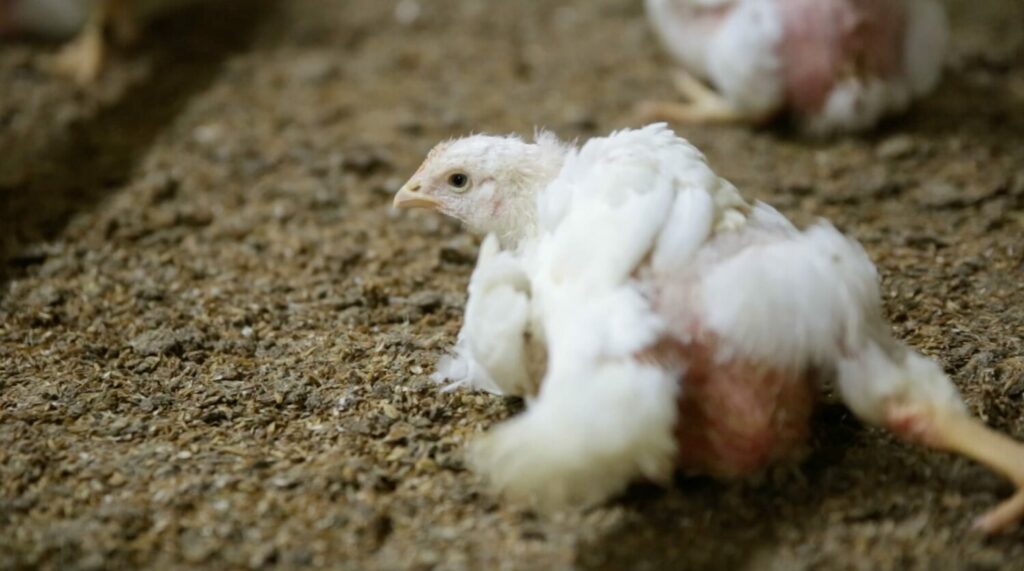
Severe bone damage
X-rays reveal a lack of complete bone calcification (the accumulation of calcium in a body tissue that occurs in the formation of bones), even in the final week of life. This leads to serious consequences for the animal, such as more frequent bone fractures and deformities, as well as increased pressure on their joints. Bone deformities were observed both in the chickens living in the factory farm and in the chickens living in the sanctuary receiving special care. This shows that, no matter how they are treated, they are overwhelmed by the size of their own bodies.. Their bones are unable to bear the weight, which makes fractures easy to occur.
Cardio-respiratory damage
In the animals examined by our team and by specialists, there was evidence of irritation and sometimes infection on the chest and legs. This is linked to the high level of ammonia in the litter, since chickens must constantly rest their chests on the filthy urine-soaked floors. The acidity of the urine and excrement on the ground – which is never cleaned throughout the animals’ lives in factory farms – further compromises the chickens’ already weakened genetics, leading to loss of feathers and red, raw burns on their chest and feet. In addition, high ammonia levels in the sampled and tested litter lead to respiratory diseases too.
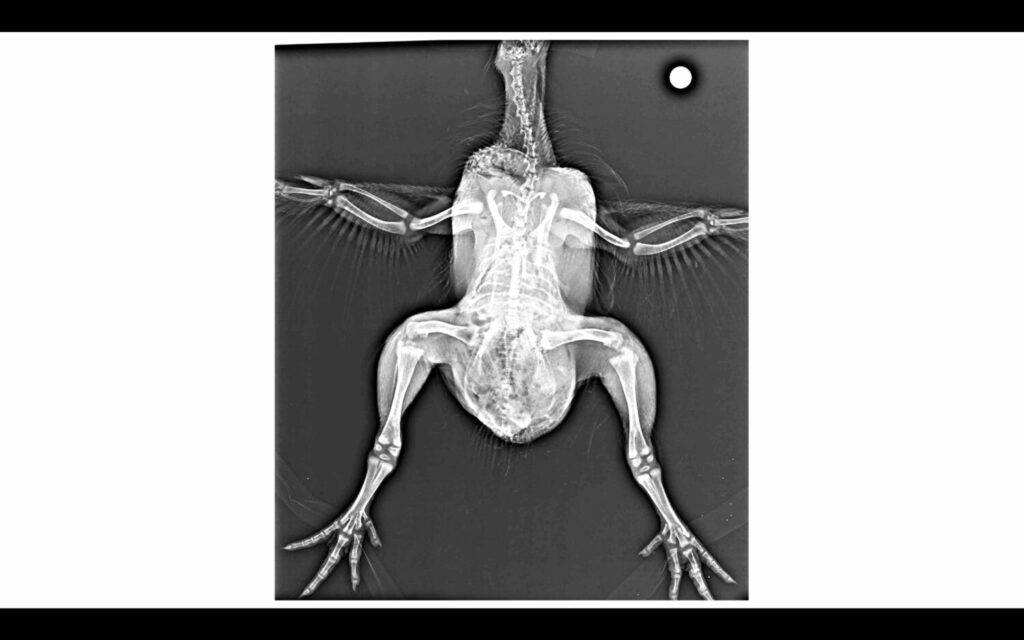
Damage to internal organs
Despite the respiratory complications caused by exposure to ammonia in factory farms, an autopsy performed on a chicken in a protected environment – i.e. without exposure to high levels of ammonia – revealed clear signs of pneumonia and excess fluid around the heart, which appears to have caused the chicken’s death.
Internal and external bleeding
The veterinarians involved in this investigation concluded that the animals who suffered from hemorrhage likely died due to impaired respiratory organs, caused by the high level of ammonia. In Italy and in the US, if a bird is struggling to breathe, is small in size, or has other health problems, the farm worker is allowed to intervene by breaking the animal’s neck without using anesthesia, in a practice called ’emergency killing and culling.’
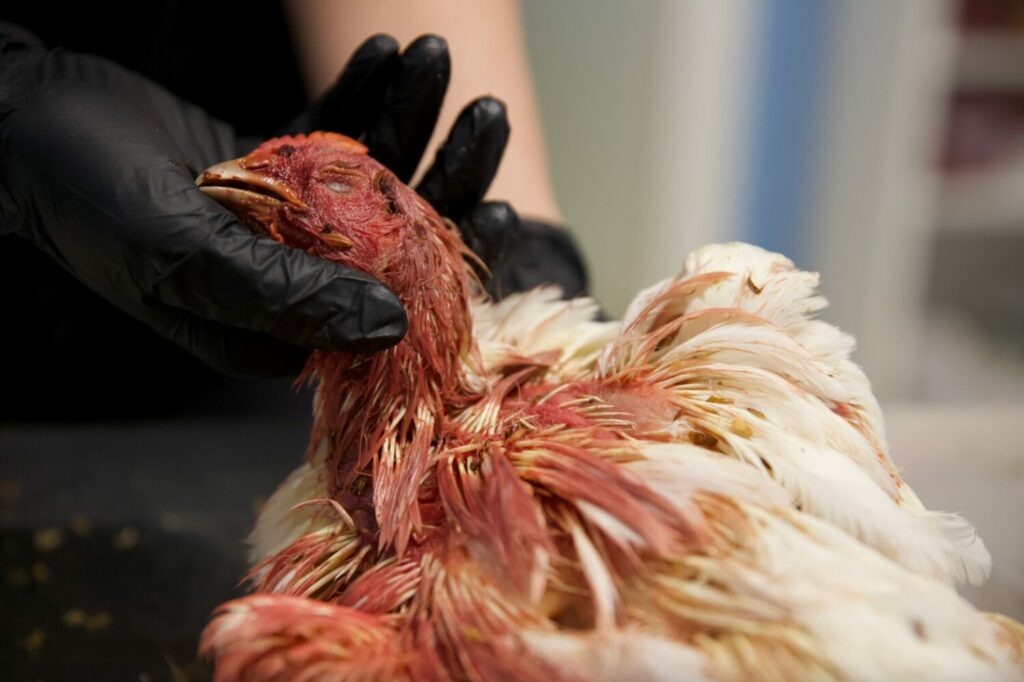
The Conclusions of The Veterinarians
According to the veterinarians’ assessments, fast-growing chickens are individuals predisposed to unnatural growth due to genetic selection. Their breeding prevents them from carrying out their most basic, natural behaviors, and they’re unable to lead healthy, long lives, no matter the conditions of their environment.
In 2010, the European Food Safety Authority (EFSA) produced documents highlighting the adverse effects associated with rapid weight gain in fast-growing chickens. The EFSA explicitly linked the observed adverse effects, including skeletal disorders, to the excessive growth rates of fast-growing breeds.
How You Can Help
Due to their breeding and environment, chickens raised and killed for meat experience extreme suffering and physical complications throughout their short lives on factory farms and slaughterhouses. It’s our individual responsibility to respect the lives of these animals by eliminating chicken from our diets and incorporating plant-based proteins like beans, legumes, and meat alternatives.

